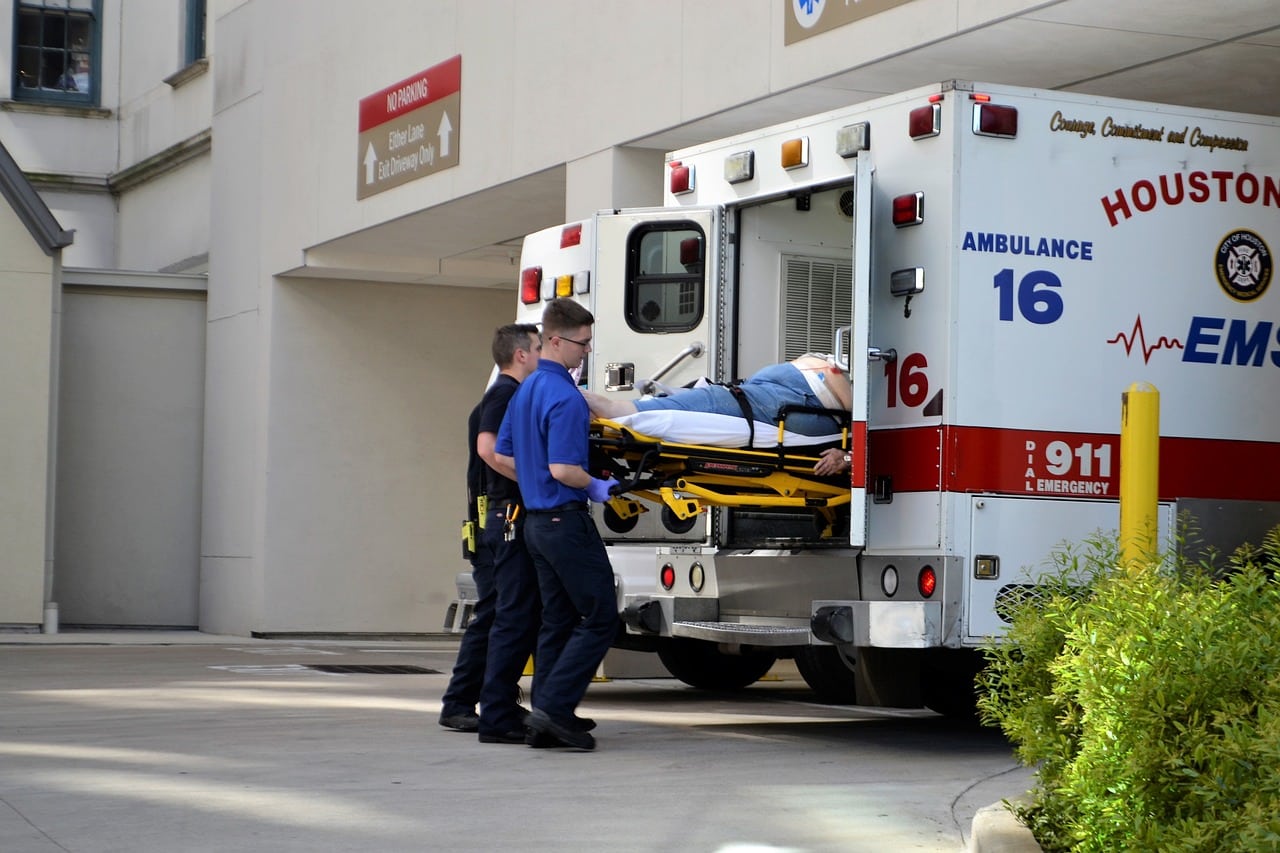Emergency Medical Services (EMS) professionals play a critical role in healthcare, often serving as the first responders in life-threatening situations. The work of these individuals is not only physically demanding but also emotionally taxing, requiring a combination of quick thinking, advanced medical knowledge, and strong interpersonal skills. Given the importance of their work, it is essential to recognize and honor EMS professionals in ways that resonate with their values and dedication. One of the most effective ways to do this is through the creation of custom EMS patches.
EMS patches are more than just identifiers; they serve as symbols of pride, belonging, and professional excellence. These patches, often worn on uniforms, can tell a story, represent an organization’s mission, or commemorate significant achievements. However, designing EMS patches that truly capture the essence of the profession requires careful consideration of various design elements, from symbolism and color to material and functionality.
This comprehensive guide explores integrative design strategies for creating EMS patches that go beyond the traditional badge, offering insights into how to design patches that are meaningful, functional, and reflective of the unique challenges and triumphs of EMS professionals.
1. The Role and Significance of EMS Patches
The Importance of EMS Patches
EMS patches serve multiple purposes, both practical and symbolic. Practically, they help identify EMS professionals and distinguish their roles within an organization. Symbolically, these patches represent the values, mission, and history of the organization and its members. For EMS professionals, wearing a patch is a source of pride, signifying their commitment to saving lives and serving their communities.
The History of EMS Patches
The use of patches in EMS dates back several decades, with origins tied to the military and other uniformed services. Initially, patches were simple identifiers, featuring basic information such as the organization’s name and the wearer’s role. Over time, as the EMS profession evolved, so did the design and significance of these patches. Today, EMS patches are complex and symbolic, often incorporating elements that reflect the organization’s history, values, and areas of expertise.
The Emotional Impact of EMS Patches
For EMS professionals, patches are more than just uniform accessories; they are symbols of honor and recognition. The patches they wear often tell the story of their journey, representing milestones in their careers, such as completing a difficult training program, responding to a significant emergency, or achieving a leadership position. This emotional connection makes EMS patches a powerful tool for fostering pride, unity, and a sense of belonging within the EMS community.
2. Key Elements of Effective EMS Patch Design
Creating an EMS patch that resonates with its wearers and effectively communicates the organization’s values requires attention to several key design elements. These elements include symbolism, color, shape, text, and material. By carefully considering each of these elements, designers can create patches that are not only visually appealing but also meaningful and functional.
Symbolism in EMS Patches
Symbolism is one of the most critical aspects of EMS patch design. The symbols used in a patch can convey a wealth of information, from the organization’s mission to the specific role of the wearer. Here are some common symbols found in EMS patches:
- Star of Life: The Star of Life is perhaps the most recognized symbol in EMS. It features a blue six-pointed star with a white Rod of Asclepius in the center. Each point of the star represents a different function of EMS: detection, reporting, response, on-scene care, care in transit, and transfer to definitive care. The Star of Life is often prominently featured on EMS patches to signify the wearer’s role in emergency medical services.
- Rod of Asclepius: The Rod of Asclepius, a symbol of healing and medicine, is a staff with a single serpent coiled around it. This ancient symbol is commonly used in medical and EMS patches to represent the healing mission of the wearer.
- Hands and Heart: Symbols of hands holding a heart or outstretched hands are often used to represent the compassionate care provided by EMS professionals. These symbols emphasize the human aspect of the work, highlighting the empathy and emotional support that EMS providers offer to patients.
- Eagle: The eagle is a symbol of strength, courage, and vigilance. It is often used in EMS patches to represent leadership and the protective role that EMS professionals play in their communities.
- Wings: Wings are frequently used in patches for air ambulance services or to signify the swift response capabilities of EMS teams. They can also symbolize the idea of “guardian angels” watching over the community.
- Local or Regional Symbols: Many EMS patches incorporate symbols that are specific to the region or community they serve. This could include landmarks, state or city emblems, or local flora and fauna. These symbols help create a sense of pride and connection between the EMS organization and the community it serves.
Color in EMS Patches
Color is another important element of EMS patch design, as it can convey emotions, signify rank or role, and enhance visibility. Here are some considerations for using color in EMS patches:
- Blue: Blue is the most commonly used color in EMS patches, as it is associated with trust, professionalism, and calmness. The Star of Life, which is a central symbol in EMS, is traditionally blue.
- Red: Red is often used to signify urgency, danger, and the life-saving mission of EMS professionals. It can also be used to represent specific roles, such as paramedics or those who specialize in trauma care.
- White: White is associated with purity, cleanliness, and medical care. It is often used as a background color or to highlight symbols and text.
- Gold and Yellow: Gold and yellow are often used to signify excellence, leadership, and achievement. These colors can be used to highlight special awards, ranks, or leadership roles within the organization.
- Green: Green is associated with health, healing, and renewal. It is sometimes used in EMS patches to represent environmental health services or to emphasize the role of EMS in public health.
- Black: Black is often used to create contrast or to signify solemnity, particularly in memorial patches that honor fallen EMS professionals.
Shape and Size of EMS Patches
The shape and size of an EMS patch can affect its visual impact and functionality. Common shapes for EMS patches include:
- Round: Round patches are classic and versatile, offering a balanced design that can accommodate a variety of symbols and text. They are often used for general identification patches.
- Shield: Shield-shaped patches are popular in EMS, as they symbolize protection and defense. This shape is often used for patches that emphasize the protective role of EMS professionals.
- Rectangle: Rectangular patches are practical and can accommodate more text, making them ideal for name tags or patches that include detailed information.
- Custom Shapes: Custom-shaped patches can add a unique touch to the design. For example, a patch could be shaped like the state or region the EMS organization serves, or it could take on the outline of a specific symbol, such as the Star of Life.
The size of the patch should be appropriate for its placement on the uniform and its intended purpose. Larger patches are more visible and can include more detail, but they may be less practical for certain uniform placements. Smaller patches are more discreet and can be used for specific roles, such as rank insignia or certification badges.
Text and Typography in EMS Patches
Text is an essential element of EMS patches, as it provides important information such as the name of the organization, the wearer’s role, and any special certifications or awards. Here are some tips for incorporating text into EMS patches:
- Font Choice: The font used in the patch should be legible and appropriate for the overall design. Serif fonts can convey a traditional, authoritative tone, while sans-serif fonts offer a modern, clean look. Script fonts can add a touch of elegance but should be used sparingly to avoid legibility issues.
- Placement: Text should be strategically placed to ensure it is easy to read and does not overwhelm the design. Common placements include along the top or bottom edge of the patch, in the center, or in a banner or ribbon across the patch.
- Content: The text on an EMS patch typically includes the name of the organization, the wearer’s role (e.g., “Paramedic,” “EMT-Basic”), and any special certifications or awards (e.g., “Advanced Life Support,” “Trauma Specialist”). Some patches may also include a motto or slogan that reflects the values of the organization.
- Emphasis: Important text, such as the organization’s name or the wearer’s role, can be emphasized through the use of bold, larger font sizes, or contrasting colors.
Material and Construction of EMS Patches
The material and construction of an EMS patch are critical for ensuring durability, comfort, and functionality. Here are some common materials and construction methods used in EMS patches:
- Embroidered Patches: Embroidered patches are the most traditional and widely used type of patches. They are created by stitching thread onto a fabric backing, resulting in a textured, raised design. Embroidered patches are durable, but they may not be as detailed as other types of patches.
- Woven Patches: Woven patches are similar to embroidered patches but use thinner threads that are woven together to create a flat, smooth surface. This allows for more intricate designs and finer details. Woven patches are ideal for designs with small text or complex symbols.
- PVC Patches: PVC (polyvinyl chloride) patches are made from soft, flexible plastic and are highly durable and weather-resistant. These patches are ideal for outdoor or high-impact environments. PVC patches can be molded into various shapes and offer vibrant colors and 3D effects.
- Heat-Transfer Patches: Heat-transfer patches are created by printing a design onto a fabric backing and then applying heat to bond the design to the fabric. These patches offer a smooth finish and can include photographic-quality images. However, they may not be as durable as embroidered or PVC patches.
- Velcro Backing: Many EMS patches are designed with Velcro backing, allowing them to be easily attached and removed from uniforms. This is particularly useful for patches that need to be swapped out frequently, such as rank insignia or certification badges.
3. Integrative Design Strategies for EMS Patches
Creating a successful EMS patch requires more than just choosing the right symbols, colors, and materials. It involves integrating these elements into a cohesive design that effectively communicates the values and mission of the EMS organization. Here are some integrative design strategies to consider:
Incorporating Multiple Symbols
EMS patches often need to convey a variety of information, from the organization’s identity to the wearer’s role and specializations. To achieve this, consider incorporating multiple symbols into the design. For example, a patch could feature the Star of Life as the central symbol, with additional icons representing specific certifications, such as a heart for cardiology or a cross for first aid. The key is to balance the symbols so that they complement each other without overcrowding the design.
Layering Elements for Depth
Layering design elements can add depth and visual interest to an EMS patch. For example, the main symbol (such as the Star of Life) could be placed in the foreground, with a background element (such as a state outline or an abstract pattern) adding context and meaning. Layering can also be achieved through the use of different textures, such as combining embroidered elements with PVC details.
Using Borders and Edges to Frame the Design
Borders and edges can be used to frame the design and add structure to the patch. For example, a bold border can help define the shape of the patch and draw attention to the central symbols and text. Edges can also be customized with stitching patterns, such as merrowed edges, which provide a clean, finished look, or laser-cut edges for more intricate shapes.
Balancing Functionality and Aesthetics
While it’s important for an EMS patch to be visually appealing, functionality should never be compromised. The patch should be durable enough to withstand the demands of the job, comfortable to wear, and easy to clean. Consider the conditions in which the patch will be worn—whether it’s exposed to the elements, subjected to frequent washing, or required to be highly visible in low-light situations. Balancing these functional requirements with the design’s aesthetics is key to creating a successful patch.
Incorporating Personalization
Personalization can make an EMS patch even more meaningful to the wearer. Consider including elements such as the wearer’s name, badge number, or years of service. This can be done through embroidery, engraving, or heat-transfer methods. Personalized patches are especially valuable for recognizing individual achievements, such as completing a specialized training program or reaching a career milestone.
Reflecting Organizational Values
The design of an EMS patch should reflect the values and mission of the organization. This can be achieved through the careful selection of symbols, colors, and text. For example, an organization that prioritizes community service might include symbols such as hands shaking or a heart, while an organization focused on advanced medical care might emphasize the Star of Life or the Rod of Asclepius. The patch should serve as a visual representation of what the organization stands for.
4. Best Practices for Creating and Distributing EMS Patches
Once the design process is complete, the next steps involve creating the patches and distributing them to EMS professionals. Here are some best practices for ensuring that the patches are well-received and effectively serve their purpose:
Partnering with a Reputable Manufacturer
Working with a reputable patch manufacturer is essential for ensuring high-quality results. Look for a manufacturer with experience in creating EMS patches and a track record of delivering durable, well-crafted products. The manufacturer should offer a range of materials, finishes, and customization options to meet your specific needs.
Conducting a Pilot Run
Before ordering a large batch of patches, consider conducting a pilot run to test the design and materials. This allows you to evaluate the patch’s appearance, durability, and comfort before committing to a full order. A pilot run can also help identify any design adjustments that may be needed.
Ensuring Proper Placement and Attachment
Once the patches are created, it’s important to ensure they are properly attached to uniforms. Provide clear guidelines on where the patches should be placed, such as on the shoulder, chest, or sleeve. If the patches have Velcro backing, make sure the uniforms are equipped with the corresponding Velcro loop. For sewn-on patches, ensure that they are securely stitched to prevent them from coming loose during use.
Recognizing Achievements and Milestones
EMS patches are often used to recognize achievements and milestones, such as completing a certification program, reaching a service anniversary, or participating in a significant emergency response. Consider holding a special ceremony or event to distribute these patches, allowing the recipients to be publicly recognized for their accomplishments.
Encouraging Patch Traditions
Patches can become an important part of an EMS organization’s culture and traditions. Encourage EMS professionals to take pride in their patches and share the stories behind them. This could involve creating a “patch wall” at the EMS station where patches from different departments or special events are displayed, or organizing patch exchange events where members can trade patches with colleagues from other organizations.
5. Case Studies: Successful EMS Patch Designs
To illustrate the impact of thoughtful EMS patch design, here are a few case studies from EMS organizations that have successfully used patches to recognize and honor their professionals:
Case Study 1: City EMS Honors Service with Anniversary Patches
A city EMS department wanted to recognize long-serving employees who had dedicated 10, 20, and 30 years of service. The department designed custom anniversary patches featuring the Star of Life, the number of years of service, and the city’s emblem. The patches were presented during an annual awards banquet, where the recipients were honored for their commitment to the community. The patches became a cherished symbol of the recipients’ careers, proudly worn on their uniforms.
Case Study 2: Air Ambulance Service Creates Specialized Winged Patches
An air ambulance service designed a unique patch to represent their specialized role in EMS. The patch featured wings surrounding the Star of Life, symbolizing the service’s swift response and air-based operations. The patch also included the service’s motto, “Above and Beyond,” emphasizing their commitment to excellence. The winged patch became a symbol of pride for the air ambulance team, setting them apart from other EMS providers.
Case Study 3: Regional EMS Incorporates Local Landmarks into Patches
A regional EMS organization serving a mountainous area wanted to create a patch that reflected their unique environment. The patch design included a silhouette of the local mountain range behind the Star of Life, with additional symbols representing the region’s wildlife and outdoor activities. The patch was well-received by the EMS professionals, who appreciated the connection to the community they served. The patch became a popular item among staff and was frequently exchanged with EMS professionals from other regions.
The Future of EMS Patch Design
EMS patches are powerful symbols that represent the dedication, expertise, and values of EMS professionals. As the EMS field continues to evolve, so too will the design of these patches. Future trends in EMS patch design may include the integration of new materials, such as reflective or glow-in-the-dark elements for enhanced visibility, or the use of digital design tools to create more intricate and personalized patches.
By embracing innovative design strategies and staying true to the core values of the EMS profession, organizations can create patches that go beyond the traditional badge, offering a meaningful way to recognize and honor the heroes of emergency medical services.
If you are interested in purchasing high-quality custom patches, feel free to call us at 1-877-503-8485 or fill out one of our FREE quotes here.




